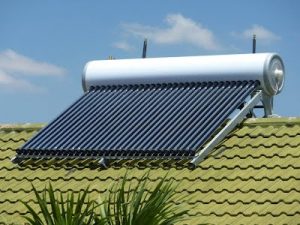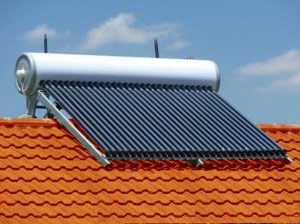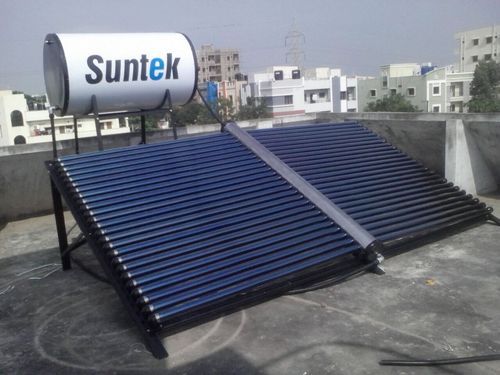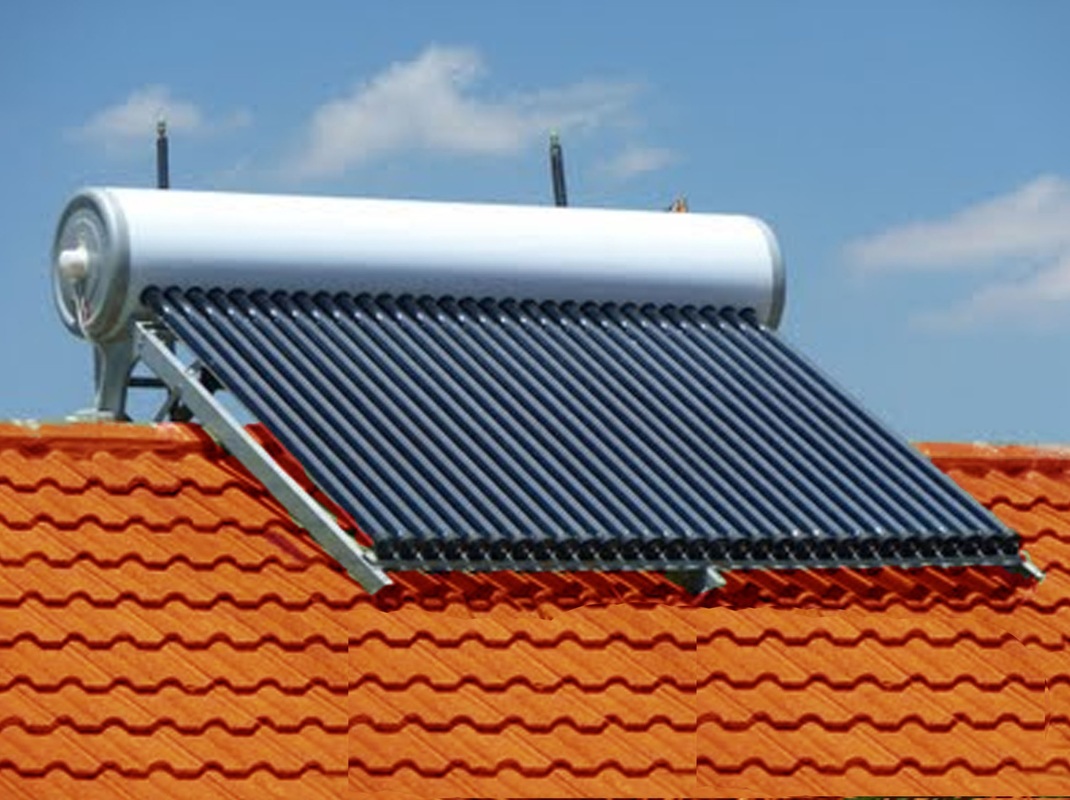Our Works






A solar water heater consists of a collector to collect solar energy and an insulated storage tank to store hot water. Based on the collector system, solar water heaters can be of two types:
Solar water heaters based on Flat plate Collectors (FPC based SWH):
Here the solar radiation is absorbed by flat plate collectors which consist of an insulated outer metallic box covered on the top with glass sheet. Inside there are blackened metallic absorber (selectively coated) sheets with built in channels or riser tubes to carry water. The absorber absorbs the solar radiation and transfers the heat to the flowing water.
Solar water heaters based on Evacuated Tube Collectors (ETC based SWH
Here the collector is made of double layer borosilicate glass tubes evacuated for providing insulation. The outer wall of the inner tube is coated with selective absorbing material. This helps absorption of solar radiation and transfers the heat to the water which flows through the inner tube.


Payback period:
♦ 3-4 years when electricity is replaced.
♦ 4-5 years when furnace oil is replaced.
♦ 6-7 years when coal is replaced.
Though the initial investment for a solar water heater is high compared to available conventional alternatives, the return on investment has become increasingly attractive with the increase in prices of conventional energy. The payback period depends on the site of installation, utilization pattern and fuel replaced.
Cost benefits of SWHS
The most cost- effective way to install a SWHS is to integrate the collector assembly, cold-water supply and piping with the design of a new house under construction. SWHS can easily be installed in group houses and apartments, especially during construction, if adequate provisions are made for piping, collector assembly and cold-water supply. Proper load matching is required to ensure that the capacity of the system installed is optimized to meet the daily hot – water needs of the end-user.
♦ Fuel Savings: A 100 liters capacity SWHS can replace an electric geyser for residential use and saves 1500 units of electricity annually.
♦ Avoided utility cost on generation: The use of 1000 SWHS of 100 liters capacity each can contribute to a peak load shaving of 1 MW.
♦ Environmental benefits: A SWHS of 100 liters capacity can prevent emission of 1.5 tones of carbon-dioxide per year.
♦ Life : 15-20 years

